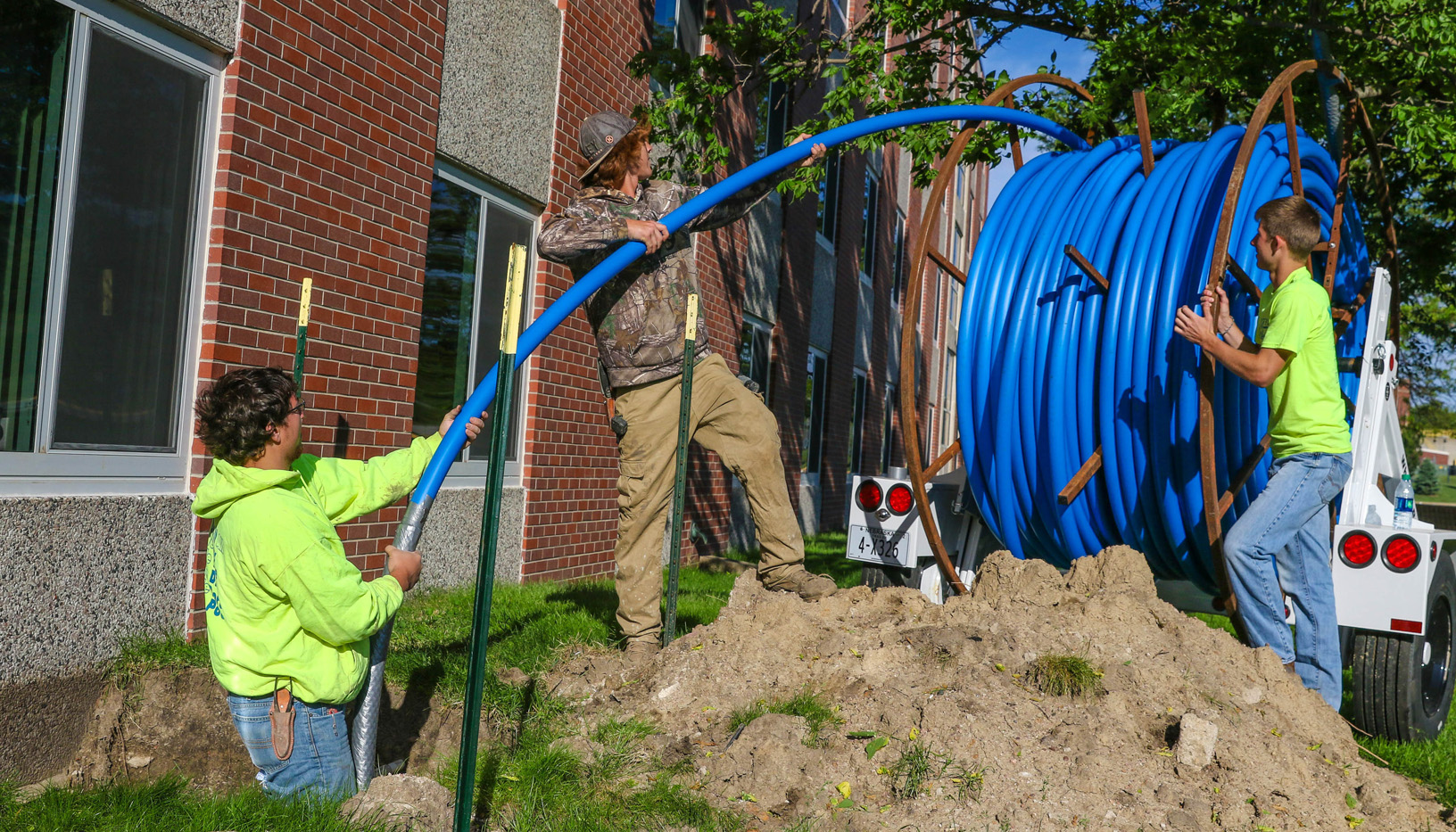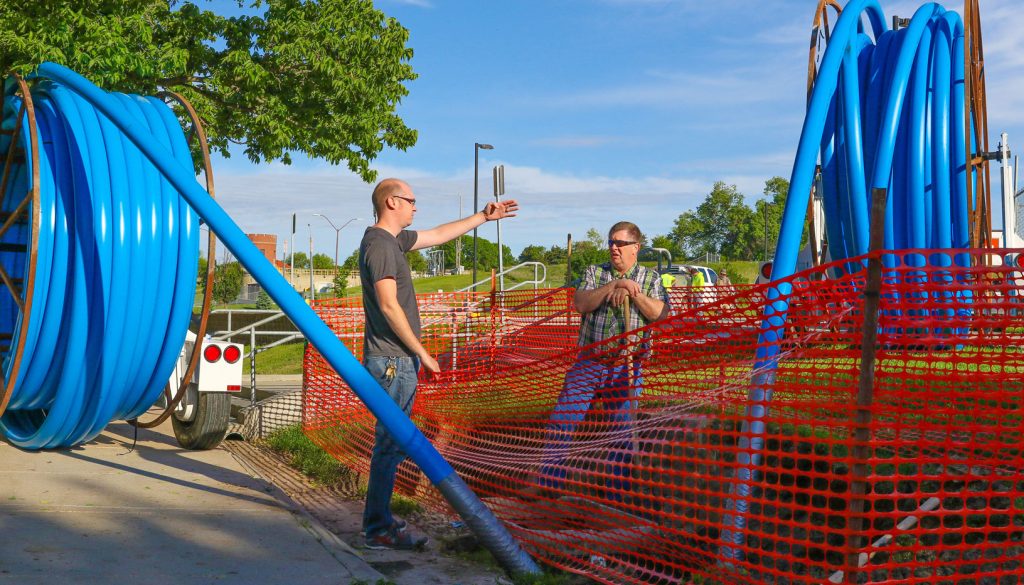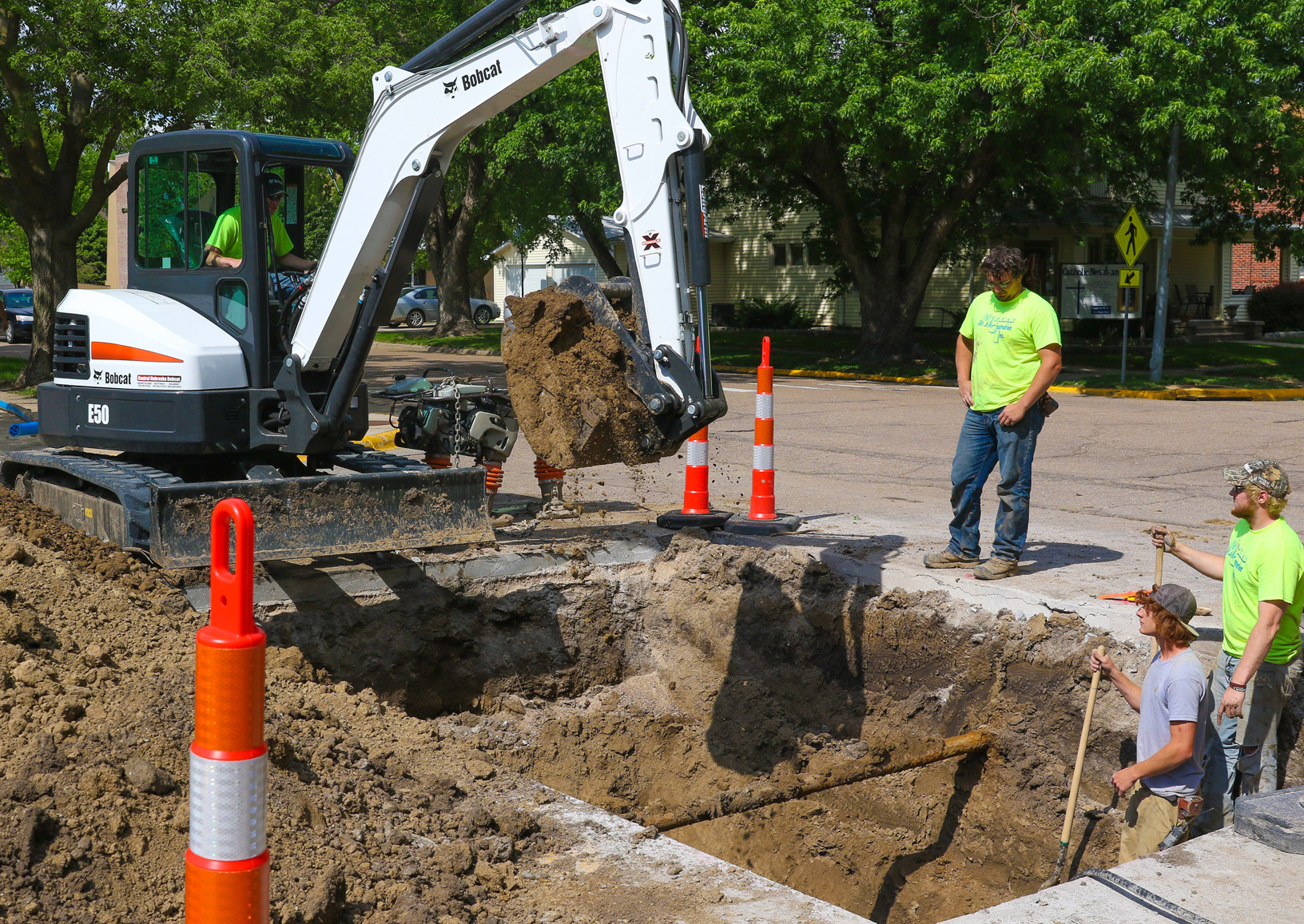
By SARA GIBONEY
UNK Communications
KEARNEY – The University of Nebraska at Kearney is installing a new fiber ring backbone to prepare for future demolition of the Otto C. Olsen building and improve the availability of information technology services on campus.
“This will allow us to have a network infrastructure that will last us the next 25 to 30 years,” said Brian Cox, director of Information Technology Services. “This is a long term investment that allows us to meet the current needs of the campus while at the same time preparing us for things we can’t even anticipate in the future.”
A fiber ring is a network topology in which each node connects to two other nodes, forming a single continuous pathway for data to travel.

The first and only fiber network on campus was installed in the early 1990s with Otto Olsen being the central hub. Every building on campus is connected to Otto Olsen to get internet and network services.
A new applied-STEM building will replace Otto Olsen. The new building is projected to be complete and open by October 2019.
Otto Olsen will eventually be demolished. The fiber ring network project is the first phase of the Otto Olsen building replacement. Information technology services currently located in the Otto Olsen building will be relocated, and connectivity will be extended to University Village.
Installing the new fiber ring will reduce the dependence on a single location for network services. Multiple buildings will serve as hubs for information technology services. The network currently supports telephone services, streaming video, television, online data usage and storage, and internet services.
“A single point of management can be a single point of failure,” Cox said.
If campus lost power, or there was an incident on campus, the entire network most likely wouldn’t be impacted as it would today.
“We do have redundancies built into the current network, but those redundancies all come back to the current building,” said Deb Schroeder, assistant vice chancellor of information technology.
“When the fiber was installed in 1990 to 1994, if the network went down it wasn’t really a big deal because life was not dependent on it. Even 15 years ago, we didn’t worry so much about down time as we do now. Now, you almost can’t live without it. If we don’t have network access on campus, we might as well shut down.”
The fiber ring network installation is expected to be complete by December 2017.
-30-
Writer: Sara Giboney, 308.865.8529, giboneys2@unk.edu
Source: Deb Schroeder, 308.865.8950, schroderd@unk.edu
